
Russia is the largest country in the world, covering over 17,125,192 km2 (6,612,074 sq mi), and encompassing more than one-eighth of Earth's inhabited land area. Russia extends across eleven time zones, and has the most borders of any country in the world, with sixteen sovereign nations.

The Yenisey, also romanised as Yenisei or Jenisej, is the fifth-longest river system in the world, and the largest to drain into the Arctic Ocean.
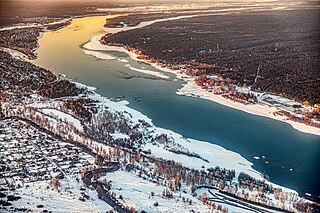
The Ob is a major river in Russia. It is in western Siberia, and with its tributary the Irtysh forms the world's seventh-longest river system, at 5,410 kilometres (3,360 mi). The Ob forms at the confluence of the Biya and Katun which have their origins in the Altai Mountains. It is the westernmost of the three great Siberian rivers that flow into the Arctic Ocean. Its flow is north-westward, then northward.

The Trans-Siberian Railway, historically known as the Great Siberian Route and often shortened to Transsib, is a large railway system that connects European Russia to the Russian Far East. Spanning a length of over 9,289 kilometers, it is the longest railway line in the world. It runs from the city of Moscow in the west to the city of Vladivostok in the east.

The Northeast Passage is the shipping route between the Atlantic and Pacific Oceans, along the Arctic coasts of Norway and Russia. The western route through the islands of Canada is accordingly called the Northwest Passage (NWP).
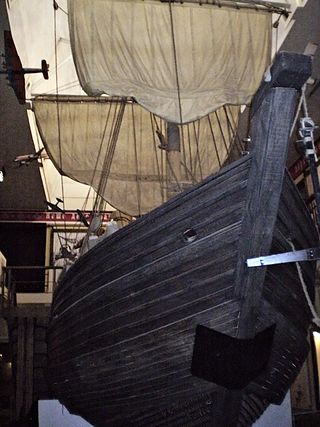
The koch was a special type of small one- or two-mast wooden sailing ships designed and used in Russia for transpolar voyages in ice conditions of the Arctic seas, popular among the Pomors.

The Laptev Sea is a marginal sea of the Arctic Ocean. It is located between the northern coast of Siberia, the Taimyr Peninsula, Severnaya Zemlya and the New Siberian Islands. Its northern boundary passes from the Arctic Cape to a point with co-ordinates of 79°N and 139°E, and ends at the Anisiy Cape. The Kara Sea lies to the west, the East Siberian Sea to the east.

Mangazeya was a Northwest Siberian trans-Ural trade colony and later city in the 17th century. Founded in 1600 by Cossacks from Tobolsk, it was situated on the Taz River, between the lower courses of the Ob and Yenisei Rivers flowing into the Arctic Ocean. The name derives from a Nenets ethnonym Monkansi or Mongandi.
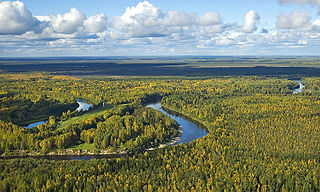
The West Siberian Plain is a large plain that occupies the western portion of Siberia, between the Ural Mountains in the west and the Yenisei River in the east, and the Altai Mountains on the southeast. Much of the plain is poorly drained and consists of some of the world's largest swamps and floodplains. Important cities include Chelyabinsk, Novosibirsk, Omsk, and Tomsk, as well as Surgut and Nizhnevartovsk.
Siberian taimen, also known as the common taimen, Siberian giant trout or Siberian salmon, is a species of salmon-like ray-finned fish from the genus Hucho in the family Salmonidae. These fish are found in rivers in Siberia and adjacent regions, and are harvested throughout the year.
Siberian natural resources refers to resources found in Russian Siberia, in the North Asian Mainland. The Siberian region is rich in resources, including coal, oil and metal ores.
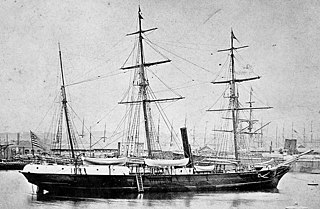
USSJeannette was a naval exploration vessel which, commanded by George W. De Long, undertook the Jeannette expedition of 1879–1881 to the Arctic. After being trapped in the ice and drifting for almost two years, the ship and her crew of 33 were released from the ice, then trapped again, crushed and sunk some 300 nautical miles north of the Siberian coast. The entire crew survived the sinking, but eight died while sailing towards land in a small cutter. The others reached Siberia, but 12 subsequently perished in the Lena Delta, including De Long.

Norilsk Nickel, or Nornickel, is a Russian nickel and palladium mining and smelting company. Its largest operations are located in the Norilsk–Talnakh area near the Yenisei River in the north of Siberia. It also has holdings in Nikel, Zapolyarny, and Monchegorsk on the Kola Peninsula, in Harjavalta in western Finland, and in South Africa.

Joseph Wiggins FRGS was an English mariner, born at Norwich into a family of mailcoach operators.
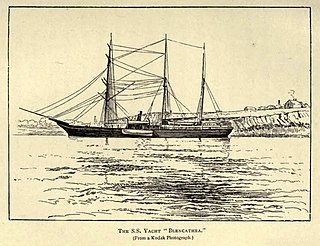
The Philomel-class gunvesselHMS Newport was launched in Wales in 1867. Having become the first ship to pass through the Suez Canal, she was sold in 1881 and renamed Pandora II. She was purchased again in about 1890 and renamed Blencathra, taking part in expeditions to the north coast of Russia. She was bought in 1912 by Georgy Brusilov for use in his ill-fated 1912 Arctic expedition to explore the Northern Sea Route, and was named Svyataya Anna, after Saint Anne. The ship became firmly trapped in ice; only two members of the expedition, Valerian Albanov and Alexander Konrad, survived. The ship has never been found.

Nikolai Nikolaevich Kolomeitsev, also spelt Kolomeytsev was a naval officer of the Russian Empire and Arctic explorer. During the Russian Civil War, he fought for the Whites.
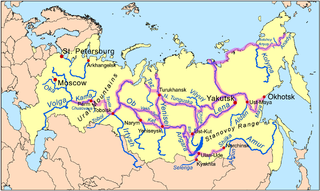
Siberian River Routes were the main ways of communication in Russian Siberia before the 1730s, when roads began to be built. The rivers were also of primary importance in the process of Russian conquest and exploration of vast Siberian territories eastwards. Since the three great Siberian rivers, the Ob, the Yenisey, and the Lena all flow into the Arctic Ocean, the aim was to find parts or branches of these rivers that flow approximately east-west and find short portages between them. Since Siberia is relatively flat, portages were usually short. Despite resistance from the Siberian tribes, Russian Cossacks were able to expand from the Urals to the Pacific in only 57 years (1582-1639). These river routes were crucial in the first years of the Siberian fur trade as the furs were easier to transport over water than land. The rivers connected the major fur gathering centers and provided for relatively quick transport between them.

Jonas Marius Lied was a Norwegian entrepreneur, businessman, diplomat, author and art collector. He obtained a short vocational business education and was proficient in English, French, German and Russian. Lied was also a noted athlete, for instance in 1906 together with Erik Ole Bye he won the Lyle Cup for double sculls. He established The Siberian Steamship, Manufacturing & Trading Company in 1912 with the purpose of importing and exporting goods through a new northern shipping lane and the Ob River and Yenisei River. He obtained Russian citizenship with the help of Grand Duke Alexander, but regained Norwegian citizenship in 1931 when he left the difficult times in the Soviet Union. According to the Russian tradition, he long used the signature "I.G. Lid" after his father Hans.

Central Siberia Nature Reserve is a Russian 'zapovednik'. With over 1 million hectares of protected area, it is one of the largest forest reserves in the world. The reserve is located in the middle Yenisei, lower Bakhta and lower Stony Tunguska river valleys, of the Central Siberian Plateau. Notably, the territory covers both banks of the Yenisei for over 60 km. The reserve is situated in the Turukhansky District of Krasnoyarsk Krai.
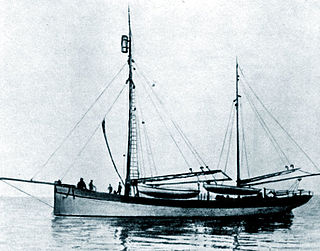
The Rusanov expedition, led by geologist Vladimir Rusanov, was a 1912 Russian expedition to the Arctic, with an initial objective of establishing mineral claims on Spitsbergen. Following completion of its official programme, Rusanov expanded the expedition's scope to include an investigation of the Northeast Passage, though it remains unclear exactly which route he proposed to take. Rusanov's ship Hercules reached Novaya Zemlya in August 1912, where he sent a message that he was continuing east; this was the last ever heard of the expedition and its 11 personnel.


















